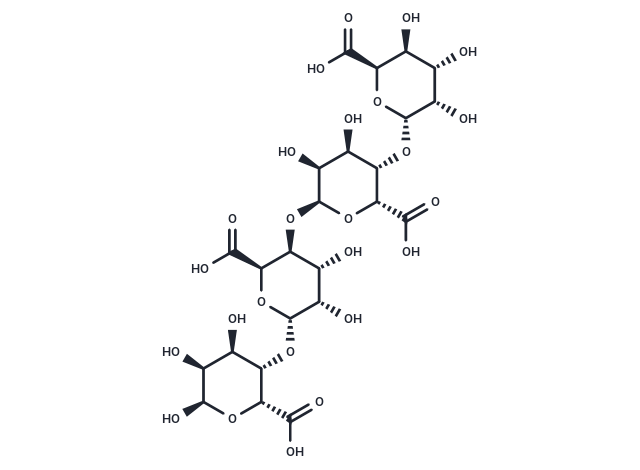Shopping Cart
- Remove All
 Your shopping cart is currently empty
Your shopping cart is currently empty

L-Tetraguluronic acid is a straight-chain polysaccharide copolymer consisting of four repeating units involved in the formation of the alginate.L-Tetraguluronic acid interacts with Glu543 in the non-catalytic domain and can help AlyRm1 to bind the substrate more efficiently and to improve the catalytic efficiency.

| Pack Size | Price | Availability | Quantity |
|---|---|---|---|
| 5 mg | Inquiry | Backorder |
| Description | L-Tetraguluronic acid is a straight-chain polysaccharide copolymer consisting of four repeating units involved in the formation of the alginate.L-Tetraguluronic acid interacts with Glu543 in the non-catalytic domain and can help AlyRm1 to bind the substrate more efficiently and to improve the catalytic efficiency. |
| Molecular Weight | 722.51 |
| Formula | C24H34O25 |
| Cas No. | 149511-37-5 |
| Smiles | O([C@@H]1[C@H](C(O)=O)O[C@@H](O[C@@H]2[C@H](C(O)=O)O[C@@H](O)[C@@H](O)[C@H]2O)[C@@H](O)[C@H]1O)[C@@H]3O[C@@H](C(O)=O)[C@@H](O[C@@H]4O[C@@H](C(O)=O)[C@@H](O)[C@H](O)[C@@H]4O)[C@H](O)[C@@H]3O |
| Relative Density. | 2.06 g/cm3 (Predicted) |
| Storage | keep away from moisture | store at 4°C | Shipping with blue ice. | |||||||||||||||||||||||||||||||||||
| Solubility Information | H2O: 200 mg/mL (276.81 mM), Sonication is recommended. | |||||||||||||||||||||||||||||||||||
Solution Preparation Table | ||||||||||||||||||||||||||||||||||||
H2O
| ||||||||||||||||||||||||||||||||||||

Copyright © 2015-2025 TargetMol Chemicals Inc. All Rights Reserved.